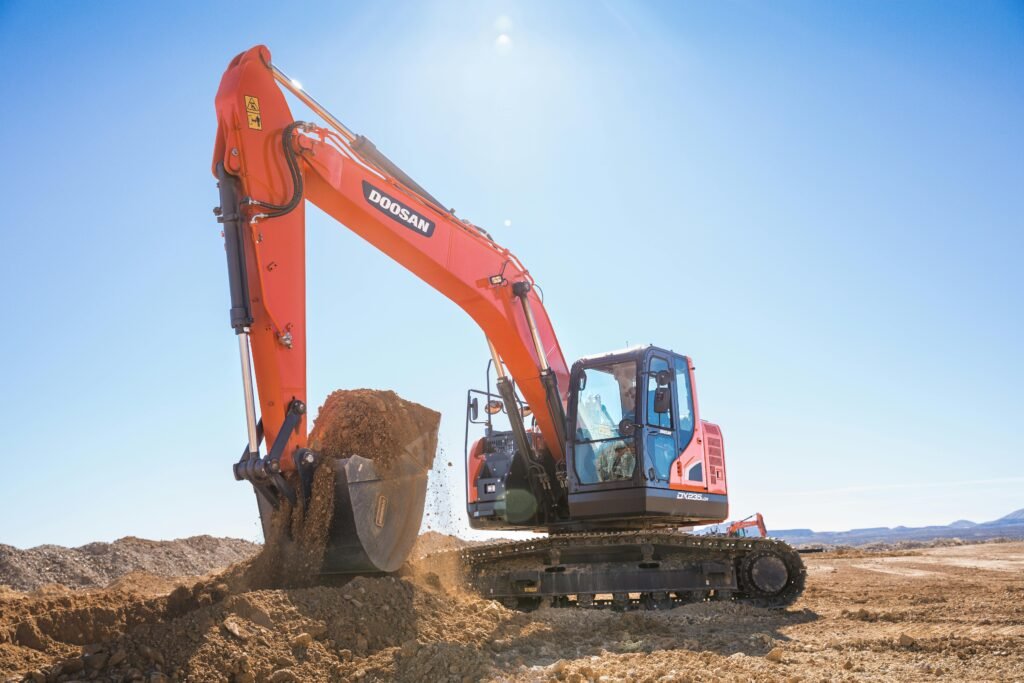When planning an excavation or preparing a site for construction, people searching for earthmoving Dubbo services are often looking for efficiency, precision, and safety. Earthmoving isn’t just about operating heavy machinery; it’s a coordinated process that transforms terrain through careful trenching, structured backfilling, and controlled compaction. These steps form the foundation for stable roads, durable foundations, and long-lasting infrastructure.
Whether it’s a small residential trench for utilities or a large-scale commercial foundation, successful earthmoving requires technical understanding, soil management, and strict adherence to safety and engineering standards. Below, we’ll explore the core processes that make up effective earthmoving work, highlighting the techniques that ensure durability and stability across all types of projects.

Trenching: Precision and Planning
Trenching is one of the most common and critical earthmoving operations. It involves excavating narrow trenches in the ground for installing utilities such as water pipes, power cables, or communication lines. A well-executed trench must be correctly aligned, stable, and safe for workers to enter if required.
The first step in trenching is planning. Engineers and operators identify the trench’s location, depth, and slope based on utility specifications and soil conditions. Before excavation begins, it’s essential to confirm that there are no underground utilities in the area by lodging a “Before You Dig” request. This step helps prevent costly damage or injury.
During excavation, the stability of the trench walls is a priority. Depending on soil type and depth, operators may use shoring, battering, or benching to prevent collapses. In moisture-sensitive soils, drainage control is also vital to prevent slippage and erosion. Using excavators, trenchers, or mini loaders, operators carefully remove material, maintaining consistent depth and width to meet engineering requirements.
Proper trenching ensures that installed services are safe from future ground movement and that subsequent backfilling can be completed efficiently.
Backfilling: Restoring the Ground
Once trenching or excavation is complete, the next phase—backfilling—restores the site to a stable and usable state. This process involves replacing the excavated material, layer by layer, and compacting it to achieve the required density and stability.
Backfilling serves multiple purposes. It supports underground structures, prevents water ingress, and restores surface strength. The materials used in backfilling can include native soil, granular fill, or engineered blends, depending on the project’s specifications.
A successful backfilling process follows several key steps:
- Material Selection: Only clean, non-expansive soils are suitable for backfilling. If the excavated soil is too wet, clay-heavy, or contaminated, alternative fill materials must be imported.
- Layering: Backfill is placed in controlled layers, typically 150–300 mm thick, to allow for even compaction.
- Moisture Control: The fill’s moisture content is critical. Too dry, and it won’t compact properly; too wet, and it may compress unevenly later.
- Compaction: Each layer is compacted with rollers, rammers, or plate compactors to remove air pockets and achieve the target density.
Proper backfilling not only supports structures but also prevents future settlement or erosion. For projects involving retaining walls or service trenches, well-compacted backfill ensures that loads are evenly distributed and that drainage systems function as intended.
Compaction: Building a Strong Foundation
Compaction is the process of increasing soil density by reducing the air between particles. It is fundamental to any earthmoving project, as it determines the ground’s ability to bear loads and resist movement over time. Poor compaction can lead to structural failures, cracking, or uneven surfaces.
There are several compaction methods, depending on soil type and project scale:
- Static compaction uses heavy rollers to compress soil solely through weight.
- Vibratory compaction uses oscillating rollers or plates to shake soil particles into a denser arrangement.
- Impact compaction involves repeatedly dropping a heavy weight onto the surface to achieve deep consolidation.
Moisture management plays a key role. For clay-based soils, water helps achieve the ideal plastic state for compaction, while sandy soils compact best when slightly damp. Technicians often perform density and moisture tests to ensure the compacted layers meet engineering specifications.
Compaction is not just about stability—it also enhances durability. Roads, pavements, and building foundations all rely on properly compacted subgrades to distribute weight evenly and resist environmental wear.
Quality Control and Compliance
High-quality earthmoving work requires thorough documentation and compliance with safety and environmental standards. Site operators should provide Safe Work Method Statements (SWMS), erosion and sediment control measures, and proof of insurance before work begins.
Safety is paramount. Operators must ensure proper trench shoring, maintain exclusion zones, and manage dust and noise levels responsibly. In larger projects, erosion control measures such as silt fences or stabilised entry points help prevent runoff and protect nearby areas.
Monitoring and testing during and after the process confirm that trenches are stable, backfill is compacted correctly, and the final surface meets project design requirements. Experienced contractors integrate these quality checks into their workflow to deliver consistent, long-term results.
Conclusion
Practical earthmoving Dubbo projects, or any earthworks operation, rely on a well-structured process that combines planning, skilled operation, and technical precision. Trenching, backfilling, and compaction each serve a unique purpose but work together to form the foundation of any successful construction project.
When done correctly, these processes create stable, long-lasting results that withstand environmental pressures and support future development. Investing in proper earthmoving practices ensures not only structural integrity but also safety, efficiency, and peace of mind for years to come.

